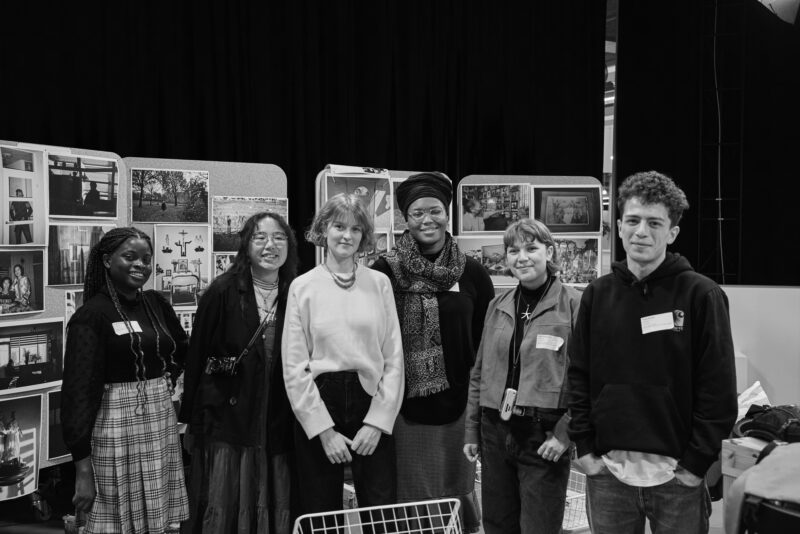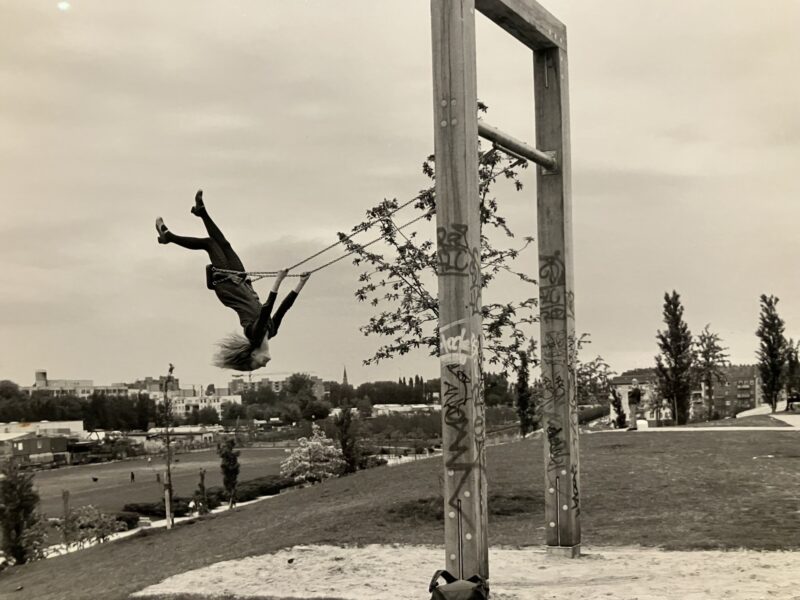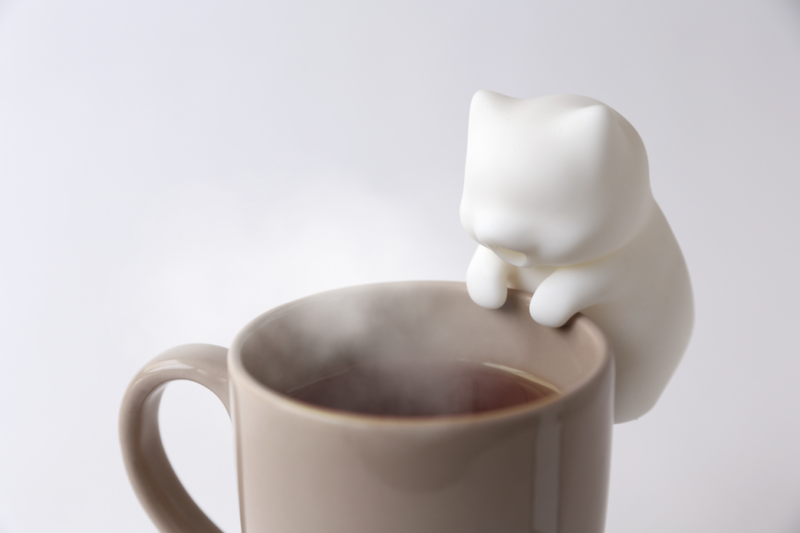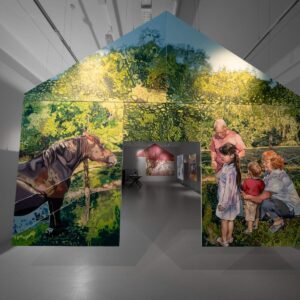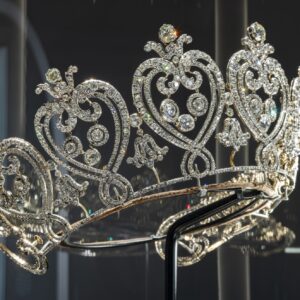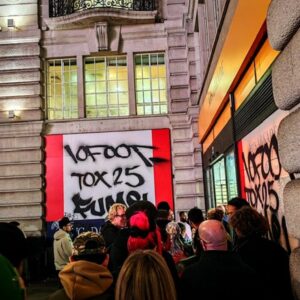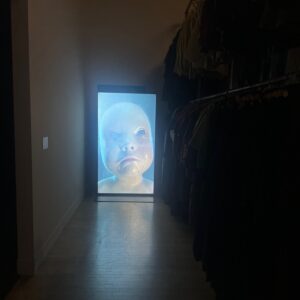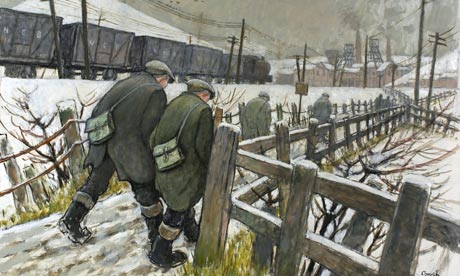
Image:Miners on the Pit Road (detail), by Norman Cornish
Norman Cornish, Newcastle upon Tyne
This exhibition’s title The Narrow World Of Norman Cornish refers more to the working conditions of his 33-year coalmining day job than to any creative limitations of his paintings and drawings. Yet, besides staying rigorously loyal to his north-east working-class subject matter, the work of this justly popular, artist, now 91, remains instantly recognisable through an adherence to a range of social realist mannerisms distinctly redolent of the first half of the last century. So the struggles of the pit face and the poverty of brick wall terraces, as well as the amber glow of the local pub and the chip van queue, are all infused with a compositionally bold yet touchingly soft-edged graphic dignity.
University Gallery, University Of Northumbria, to 7 Oct
Robert Clark
We Have Our Own Concept Of Time And Motion, London
Earlier this year, Wikileaks showed what an independent group sharing information can achieve. So what does the spread of knowledge and culture in the digital age mean for artists? Self-organising and the politics of information are the lively themes of workshops and debates in Auto Italia’s project space, housed in a former car showroom on the Old Kent Road. This artist-run initiative is collaborating with a trio of young activists, writer Federico Campagna and artists Charlie Woolley and Huw Lemmey, to create events in the spirit of Autonomia, a leftwing movement of Italian intellectuals in the 1970s. Updating that group’s concerns, topics up for discussion include the selling off of education and the geopolitics of online distribution.
Auto Italia South East, SE1, Thu to 28 Aug
Skye Sherwin
Ben Nicholson, Middlesbrough
Through a focus on his early landscape drawings from the 1920s and by inclusion of lyrical works by his wife Winifred and maverick friend Alfred Wallis, this Ben Nicholson exhibition reveals a more personally lovable artist than the renowned English modernist of later years. As time went on, despite Nicholson’s painting and sculpture gaining in assurance as it became more abstract, it still shrank in its too easily direct comparison with international peers of stature such as Mondrian or Picasso. These early works place the artist more flatteringly within a heritage of pastoral art that might run from Samuel Palmer to Ivon Hitchens, a tradition that looks less to international innovations than to a modest yet creatively proud Englishness.
MIMA, to 6 Nov
RC
This Unfolds, Penarth
The springy premise here is storytelling, allowing eight young photographers to bounce ideas around between documentary, fiction and more abstract work. Award-winning graduates Absalom & Bardsley return to the Welsh landscape of their youth, drawing on imaginative transformations in their images of spooky woods, where old discarded doors double as magic portals. There’s a fairytale quality to Amy Bullock’s surreal abstracts, where iridescent colours suggest the wings of butterflies or rippling water. The show also deals in gritty realism. Spurred by the disillusioned Albanian immigrants she saw in her native Italy, Chiara Tocci has recorded the lives of those Albanians left behind.
Ffotogallery at Turner House, to 3 Sep
SS
Ruth Ewan, Dundee
Ruth Ewan puts her work at the service of the disempowered, from disenchanted children to rebels disgusted by the global rat race. In London recently she got 100 buskers to sing Ewan MacColl’s protest song The Ballad Of Accounting in the city’s Square Mile, and in Edinburgh the artist tried to teach parrots anti-globalisation slogans recorded at the 2005 G8 protests. Accounts of such projects form part of this exhibition but, typically, the central focus is a work created with the social history of the local area in mind. The work’s title, Brank & Heckle, refers to a brank, a 16th-century iron muzzle used to silence women offenders, and hecklers, first thought to refer to 19th-century Dundee mill workers who, while heckling (combing out) flax would, like the artist, give surreptitious voice to dissent.
Dundee Contemporary Arts, to 9 Oct
RC
This Is Design, London
After five years of cataloguing and conserving, London’s Design Museum is dusting down its impressive collection for this survey of everything from architectural maquettes to haute couture dresses and park benches. There are classics such as the Anglepoise lamp, those ubiquitous green, white and yellow road signs and Moulton shopper bikes, and the show’s aim is to reveal the key role, however subtle, that design plays for everyone, tracing an evolution across the past century. It also draws attention to the somewhat Big Brotherish-sounding “quiet design”, the kind you don’t notice that shepherds you through the modern world.
Design Museum, SE1, Wed to 22 Jan
SS
Gerard Byrne, Dublin
A momentous look back at the film, video, photography and installation work of an Irish artist renowned for his ambiguous take on cultural history. Byrne sets up image-and-text compositions in which there is often a deliberate dislocation between pictures, whether moving or still, and words, whether broadcast or printed, just as there is an uneasy relationship between historical fact and restaged re-enactment. In the video New Sexual Lifestyles the text of a panel discussion published in a 1973 issue of Playboy is re-performed for video in a 2003 glass pavilion set in the Irish countryside, with the actors’ Irish accents playing incongruously against the shabby 1970s stateside glamour of such expert participants as Linda Lovelace.
Irish Museum Of Modern Art, to 31 Oct
RC
Honky Tonk, Liverpool
Country and western music not only recognises but celebrates its own cliches. While theoretical academics and self-conscious modernists shy away from the sentimental pitfalls of such subjects as love, sex and death, the country and western crooners would give the human tragi-comedy full unashamed voice. This disinhibiting exhibition celebrates country music parallels drawn between the outback States and Liverpool, which, in case you didn’t know, has been called the “Nashville of the north” by reputed music historian Kevin McManus. Well, the show records the historical fact that not only the “Singing Cowboy” Roy Rogers but also his wife Dale and horse Trigger stayed at Liverpool’s Adelphi Hotel in 1954. Included in this respectful yet ironically irreverent take on the subject are Derek Boshier’s drawing Naked Cowboy and Bruce Lee’s acrylic 3 Axe Handles Up A Bull’s Ass.
Bluecoat Gallery, to 18 Sep
RC
guardian.co.uk © Guardian News & Media Limited 2010
Published via the Guardian News Feed plugin for WordPress.
